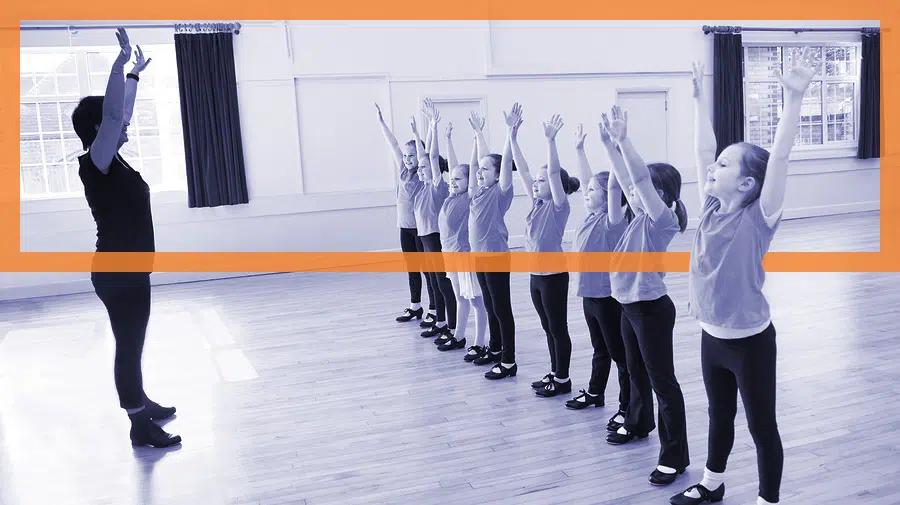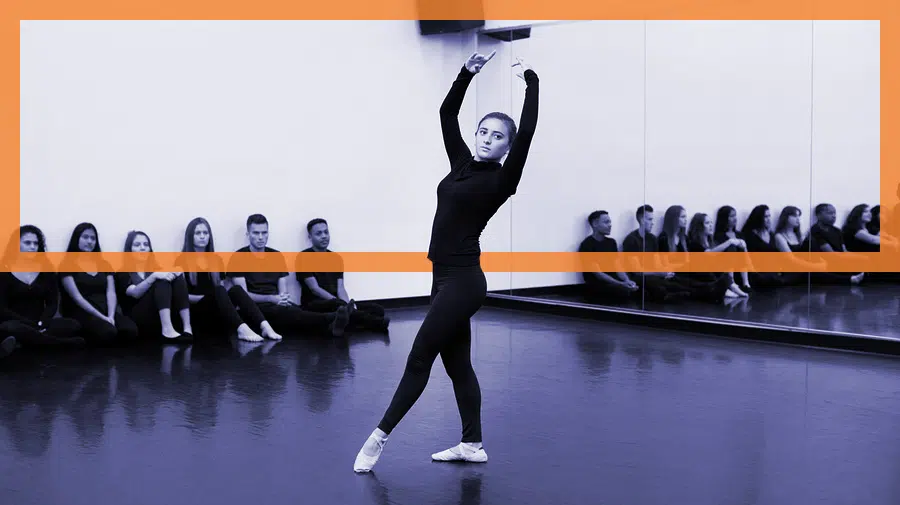As with any business, it’s important to choose the right products and services to offer to keep your current customers and potential clients coming in the door. If they’re going to be spending their hard-earned money, they want you to provide them with the exact things they are already looking for. Running a dance studio is no different. It’s important that you choose the right classes (i.e. your services) to offer so that you can keep a steady stream of clients contributing to your bottom line all year long.
What Classes Should You Offer?
Before you can answer this question, the first thing you need to decide is who your ideal customer is. In other words who will you ultimately be targeting in your marketing? If you’re planning on marketing to kids, for example, you’ll offer a different set of classes, or at least less complicated choreography, than you would for teens and adults. If you’re catering to couples, those classes and choreography will be different as well. Furthermore, if you have several sets of ideal customers you would like to work with, and it happens, you’ll need to have instructors in place that can handle each of the various niches that you plan on serving.
Will you teach traditional classes of ballet, jazz, tap? You could add in some modern classes such as hip hop, lyrical, and contemporary. Or you could even teach active lifestyle classes such as Zumba, aerial silk, or some other trendy aerobic style lessons.
For some dance studio owners, they can’t imagine teaching anything but traditional dance classes to young children. Others prefer to only teach older children, teenagers, and adults because they feel they are easier to work with. It’s important that you get really clear on the age group or groups you want your studio to serve, and hire instructors accordingly.
Then again, who you will ultimately serve could depend on the demographics of the town or city your studio is in. In other words, what the public wants in your geographic location could determine your ideal customers for you. For example, hip-hop classes are inspired by urban culture and are therefore in the highest demand in urban settings.
How Do You Find Out What The Public Wants?
If you’re just opening a dance studio, your work is certainly cut out for you in terms of research, compared with those that have been running a studio for a while. The reason for this is studio owners that have been in the game for at least a year or more, will likely have at least some students in their client base that they can survey and do a market analysis on.
If you fall into the category of not yet having an open dance studio, you’ll need to work that much harder to get the answers you seek. Either way, the more you can talk with your community, the faster you’ll find out what people want and are willing to pay for. On the other hand, if you’ve not yet opened your dance studio, and aren’t currently paying rent or mortgage on a building, it might not cost you as much to do all this market research as it would a studio owner who’s already open and trying to stay afloat.
Below are just a few ideas you can use to find out what the public wants from your dance studio:
1. Host a free open house complete with demonstrations.
The most popular demonstrations will likely represent the classes potential students would want to take. Even if you haven’t opened your dance studio yet, you could open your doors prior to your official launch to host this open house.
In fact, if you don’t yet have a building for your studio, perhaps you could rent space at a local school, gym, or recreation center to host a one-day open house style event.
You could also teach free mini-classes at schools, gyms, recreation centers, in order to generate buzz and gauge interest. Then, be sure to stick around after each free mini session to talk to parents and students about how they felt about the classes, and if they have other classes they would be interested in.
2. Post surveys on social media, and send them out to your email database.
Use free tools such as Google Forms or Survey Monkey to create your survey, making sure to include a required field in the form for name and email address. This gives you a way to follow up with everyone after they complete it. Ask people to share the survey with others that might be interested in taking classes as well.
If you’re using dance studio software like The Studio Director, sending surveys via email to your database becomes simplified. You can create templates and drip campaigns that allow you not only to send the survey multiple times but also makes it easy to follow up with a sequence of emails catering to their response.
For example, let’s say the email recipient completes the survey and states they want ballet and tap classes for their kindergartner. Now, if you already plan to offer those classes, you can send them a targeted email offering the times, dates, and fees for your ballet and tap classes.
As an added incentive to get the public to answer your survey, you could host a giveaway of some kind. This giveaway could be for a gift card, a gift basket, or even a free class or set of classes.
3. Send out flyers to local schools and youth groups mentioning just a few of the classes that you are considering offering.
You’ll want to include a note on your flyer that says something to the effect of “Don’t see the class you want? Call us today, and we’ll see if we can accommodate you!” This method may lead to enough people asking for a specific type of class, that you can then add to your roster.
4. Do a pre-launch sale of the classes you are considering offering.
If you can’t get enough students to make a full class, simply remove it from your services. However, if it fills up quickly, you could always add additional time slots to meet the demand.
This task becomes much easier with The Studio Director as well. With our streamlined billing and simple scheduling tools, students can enroll in classes and pay for them online. If a class gets full, they are automatically added to a waitlist. You’ll be able to see which classes are in the highest demand with just a few clicks on your computer.
It’s important to note that all the market research you can do ahead of time won’t guarantee that your dance studio is profitable.
Acting on your research is where the proof in the proverbial pudding lies. Eventually, you’ll have to actually start adding classes to a schedule, market them to potential clients, and (hopefully) begin enrolling students.
From there, you will be in a never-ending game of trial and error. Yes, you may finally settle on some popular classes that you can sell again and again like clockwork. Still, there will be times you may want to consider adding new classes either due to a suggestion from current clients, as a result of trends you have learned about, or simply based on a desire to try something new.
Sometimes adding a new class will result in having time slots easily filled, and those new classes will be a massive success. Other times, you’ll find that the new offering is a dud that nobody wants. That’s okay.
Just keep moving forward, and never stop listening to what your clients and prospects want. Remember, the more you listen to your community and deliver exactly what they want to them, the more they will keep coming back as paying customers.
Optimizing Your Class Offerings To Make Running a Studio Profitable
Once you have decided on the dance classes you will offer. You must then choose how you will make the most of the classes, your time, and efforts so that running your studio will be as profitable as possible.
First and foremost, you should consider offering a bulk pricing package for your classes.
This does a few things for you:
1. It incentivizes your students to keep coming back because they have already paid for the course material upfront. Also, when students attend all the classes, they are more likely to succeed with the lessons learned. This could give them a sense of accomplishment that motivates them to buy more classes.
2. In the event that your students drop off throughout the season, your studio won’t suffer a loss in profits.
3. Because you will have the money upfront, you can budget for expenses and know ahead of time how much money your studio still needs to bring in.
4. This pricing model could also make the per-class price a little or significantly cheaper for students, which may incentivize them to take additional classes during this or future dance seasons.
If a class is filling up quickly, add another time slot for the same class as soon as possible.
By adding additional time slots, you will keep those students on your waiting list from seeking another studio to get their instruction. If you have to hire additional instructors to keep up with demand, do so. It’s a small price to pay to serve more students!
If a class is struggling to get full, consider removing it but only if it makes sense to.
Unfortunately, it is possible you’ll have no choice but to cancel a class. If this happens, act quickly and try to get anyone signed up for it into another class. Of course, in some cases, canceling can hurt your reputation, and could cost you a client. When this scenario occurs, you might need to do a cost analysis to see if you can at least break even after expenses. It could be beneficial to simply let the class continue, and the few students that are in that class could result in lifelong customers.
Offer gear and additional classes to current students.
It is said that the easiest customer to sell to is one that is already buying from you. Can you offer special pricing to students that are already enrolled if they wish to take additional classes? Perhaps to fill up your smaller classes you could give a percentage off to any student already enrolled in something else.
Selling t-shirts, tights, shoes, and other gear may also be a way for your studio to be more profitable. Again, run the numbers. Determine if it would be beneficial for you to bulk order dance equipment and materials at wholesale to sell in your studio.
The Studio Director Makes Quick Work of Running a Studio
As you’ve already seen, there is so much work that goes into running a studio. And, this work is all before even stepping into the classroom and teaching a single class. The hustle and bustle of a dance studio are not for the faint of heart. That’s why the most successful studio owners turn to The Studio Director. Our dance studio management software cuts countless hours from your schedule and can save you more headaches and stress than you can imagine. Click here to learn about the many product benefits our software can offer you.





